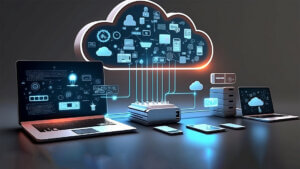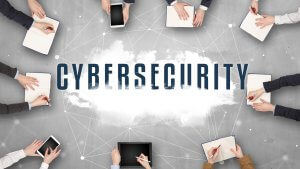While we don’t typically think of offices as risky places, they are still exposed to a number of threats. These include both physical risks (such as thefts and violence) and cyber risks (like data breaches and computer viruses).
In order to protect their workers, properties, and data, organizations need to take proactive actions to neutralize or at least minimize safety risks. Whether this is in the USA or APAC regions, this following tips can be very useful for security!
Prepare Emergency Plans for Different Risky Scenarios
Different emergency situations could affect your workplace, such as fires, power outages, and even hostage-taking. Factors that influence the emergencies your business is most at risk of range include the industry in which you operate and the geographical area in which your office is located.
One crucial part of a physical security plan is preparing emergency plans for each potential emergency scenario. The steps needed to create such a plan include the following:
- identifying potential risks
- designing a response plan for each risk
- testing the plans to make sure they work properly
Modernize Your Video Security System
Video monitoring is an important component of your office’s security strategy. It can both work as a deterrent, thus reducing the event of a crime, and collect evidence after illicit acts have been committed.
Staying up to date with the most modern technologies available is essential if you want to reap the full benefits of your video security system.
You should switch to digital IP video systems if you still use traditional analogue systems. Such solutions offer several advantages over analogue systems, from lower cost and easy scalability to higher-quality footage.
You should also consider switching to a cloud-based video surveillance solution. This eliminates your need for in-house data storage (which can be expensive) and provides you with the ability to view and manage your footage from any smartphone, computer, or device that’s connected to the internet.
Reinforce Access Control Measures for Sensitive Rooms and Areas
Each workplace has different needs when it comes to access control measures. However, certain areas of your premises may require additional security measures. These include data centres, server rooms, and other areas with sensitive information. That’s because the potential damage of unauthorized personnel gaining access is particularly high.
To ensure that only authorized staff can access such areas, you should consider reinforcing your access control measures with additional locks and more advanced solutions such as a biometric reader.
You should also evaluate implementing multi-factor authentication (MFA) procedures for those who want to access the area. MFA requires a user to provide two or more pieces of evidence, like a card and a password, to gain access.
Use Strong Passwords and Store Them Securely
95% of cyber breaches are the result of human errors. Therefore, educating your workforce in cybersecurity practices is crucial to protect your organization. This includes teaching them how to create strong passwords and store them securely.
Installing a password manager to store your passwords securely is another crucial step to boost your cybersecurity.
Take Measures to Secure Your Wi-Fi Network
Hackers could use an unsecured Wi-Fi connection and other cybercriminals to gain access to an office’s data and systems. To protect your organization from such threats, you must take measures to secure it.
To start, you should enable encryption protocols such as WPA2 and AES, which encrypt data being sent over the network. It would be best to consider having separate networks for guests and employees, with the latter being only accessible to authorized personnel.
To prevent eSIM card hacking, users should prioritize securing their accounts with strong passwords and two-factor authentication, as well as exercise caution when interacting with unknown sources to avoid malware installation.
Finally, it’s essential that you keep your router up to date, use a strong Wi-Fi password, and regularly review the list of connected devices to identify any unauthorized connection.
Regularly Upgrade Your Anti-Virus and Anti-Malware Software
One way cybercriminals can do considerable damage to your business is by installing malicious software on your systems. That’s why having the right anti-virus and anti-malware solutions in place is essential. You must regularly update your solutions with the latest security patches. You should also consider automating the process so that updates occur on a regular basis.
Finally, you should scan your network and systems at least once a month to ensure nothing suspicious has gained access.























